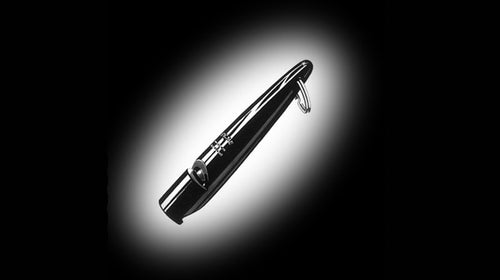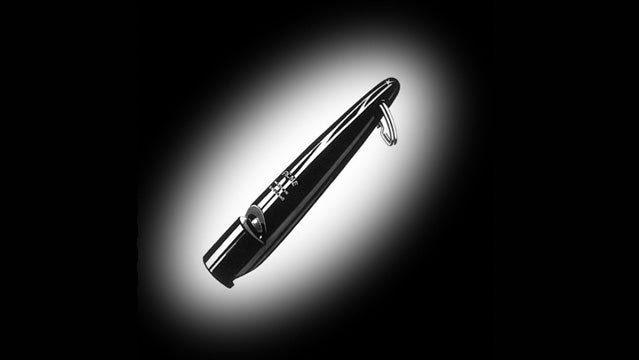Getting a reliable recall in older dogs without previous training or breeds commonly known to be less biddable and more independent (hounds, pointers, and such) will require commitment and effort. First, you’ve got to train out the old problem and then train in the new, desirable behavior. Here’s how we’ll do it.
The Ultimate �����ԹϺ��� Companion
All you need to know about going wild with man’s best friend.1. Teach the command “come” or “here.”
2. Consistency: The reinforcement and the command must be presented the same way each time. Introduce a reward your dog likes for a correct response.
3. Condition with distraction. You want your dog to come to you despite any distractions out in the world.
4. Gradually extend distance of your recall.
It’s easy to teach the “here” behavior. Just walk along with the dog at heel on lead (leash). Then stop and quickly walk backward, showing your positive reinforcer, like a treat, and use your recall command. Use a bridge like “good dog,” “yes,” or a clicker, and mark the behavior as the dog starts toward you. Deliver your reward as the dog comes in. I call this exercise a reverse heel. Next, leave the dog at sit. Attach a long cord for safety. Walk out, give the command, “here,” and show the treat. No compliance? Use the cord for encouragement. Keep distances short to teach the command and introduce the reinforcer.
Use a trill on a whistle to signal the recall as well. I prefer high-pitched ACME dog whistles because they don’t draw a lot of attention from people, but the dog can hear it just fine over long distances.
Now here’s the key: Just because your dog is coming to you doesn’t mean he’s necessarily trained for recall. You’ve got to get a 100-percent response rate in five different locations (yard, field, park, etc.) to call it a trained behavior. On average, getting to that point will take about 1,000 repetitions with increasing levels of distraction. No, it’s not quick, but it’s worth it.
THE MOTIVATORS
Some positive reinforcers: A treat, food, or perhaps a toy; or, for some dogs, a retrieve of a ball or training dummy; and there’s always the big one, lavish affection. The goal: Convince your dog that you are the best thing going. A big, fun reward is waiting for an immediate recall. If it’s more interesting to be with you than on an independent frolic, training the recall shouldn’t be hard at all.
A tough rule: You cannot maintain the integrity or value of a primary reinforcer if it is inappropriately or indiscriminately given out. If you’re giving out treats or lavishing affection any old time, you’ll diminish the effectiveness of the reward as a motivator.
FOCUS
You must get eye contact. Total attention is needed if you intend to become the leader. Practice holding your dog’s attention for increasing lengths of time with direct eye contact. You cannot do so wearing sunglasses. Treats work well: Say the dog’s name and give a treat after a few seconds of eye contact. Gradually lengthen the time required to earn a treat. Then add distraction. If you walk in a circle, will the dog follow you with his eyes? If you raise your arms, will he maintain eye contact?
DISTRACTION
Once you have a basic recall down, start to add distractions. Throw a ball over your dog’s head as he’s coming in. Have a friend bike or jog by. Have a child playing elsewhere in the yard. Start adding distractions in an enclosed area—a garage, fenced yard, using a check cord. You want to control the situation so that your dog is successful almost all the time. Failure weighs heavily on most dogs and quickly leads to confusion and disengagement. Timing is crucial. Wait until there’s a pretty good chance your dog will look up from whatever he’s doing before you give the recall command. Every time you try and fail, you’re reinforcing the dog’s tendency to ignore you.
Once you get five recalls in five places with minor distractions, move to big distractions: Water, other dogs, interesting smells, people, and wild animals. The only way to desensitize your dog to the effect of these is to repeatedly expose him to all in a controlled environment. First, at short distances, then gradually extend the distance of compliance.
Dogs are pleasure seekers. Make coming to you more rewarding than whatever else is going on and reinforce it time after time and you’re on your way to a reliable behavior—a habit.
PITFALLS
1. Never chase the dog.
2. Never call your dog to punish, confine, or provide any negative experience. If your dog doesn’t like being put outside, never call him to you to put him outside.
3. Don’t dilute the value of the positive reinforces with indiscriminate application. The dog needs to work for everything.
4. Time the marker reward for the best behaviors, exactly when they occur. No delay. Timing is crucial.
This article originally appeared on �����ԹϺ��� K9, the former dog blog of �����ԹϺ��� magazine, on March 31, 2009.


